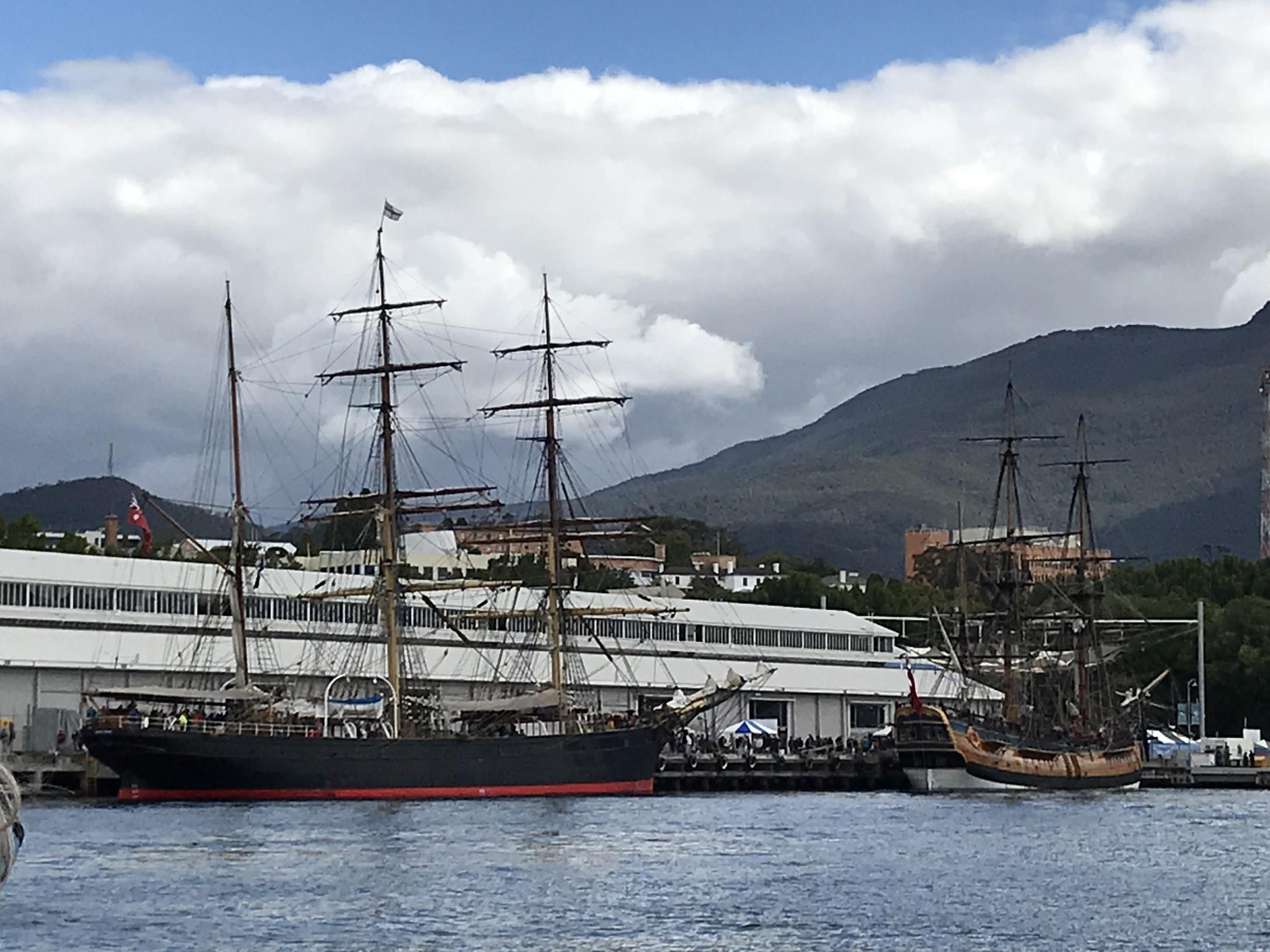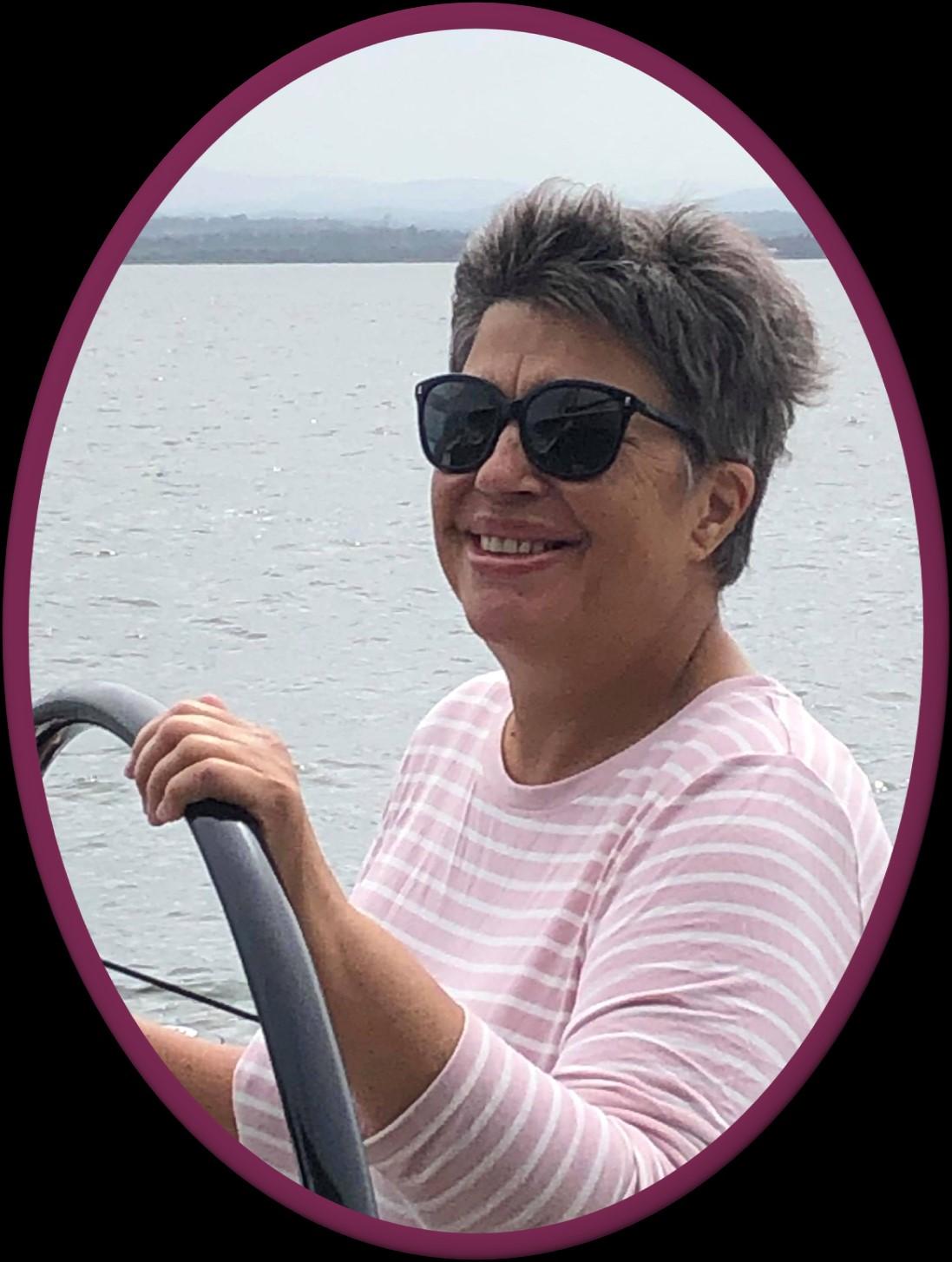
5 minute read
SV Rhona H: Julie Porter
The Rhona H
By Julie Porter SV Rhona H
Advertisement
By Julie Porter


SV Rhona H taken from SV Derwent Hunter.

I must go down to the sea again, the lonely sea and the sky and all I need is a tall ship and a star to steer her by …. (John Masefield)
That line has always intrigued me but the tall ship part especially so.
Most people tend of think of tall ships as the big square rig gers, either alongside with the yards overhanging the wharf, or out at sea with lots of canvas as they navigate the oceans.
However, our tall ship happens to be a small, tall ship.
Built in 1942 by Ned Jack, with the hull of Huon Pine, the decks Celery Top and the masts Oregon (or more correctly Douglas Fir), SV Rhona H is the oldest and smallest operating tall ship in Hobart. She is now a 52foot, gaff rig ged, topsail ketch, fitted with a suite of clipper canvas sails.
It was with some sense of awe that I signed the document giving me 32 shares in January 2014: my partner Charles owning the other 32. Little did I know then that boats are owned with 64 shares and the Australian Register of Ships is the regulator of all things of registered boat ownership. It was a steep learning cur ve.
We soon noticed the bell had 1942 marked on it with the name Rhona H. Definitely the bell belonging to the vessel, but a mystery when the registry had listed 1947 as the vessel’s date. Rather than get a new date inscribed (a tough ask on a cast bell), we started to investigate the origins of the vessel. It became a story of intrigue and one that has led to many connections and stories of Tasmanian maritime history.
The boat was indeed built in 1942. She was first called Jessie (or Jessica) after the first owner’s, (Frere Youl) daughter. Mr Youl had commissioned the boat and she was built as a gentleman’s recreational fishing craft, rig ged as a ketch, specifically to ply the waters of Bass Strait and the Tasmanian Northwest Coast. Sadly, he had to sell the boat and Max Hardy purchased it in 1946 and renamed her Rhona H after his then girlfriend, Rhona Bird.
The Rhona H spent many years based in Stanley where she was used as a cray and couta boat traversing Bass Strait and the
islands and delivering her catch to Queenscliff in Victoria or back to Stanley in Tasmania. She would take fish one way, and on her return was also used as a trading vessel, so joining the fleet of vessels that were used as trading vessels in the 1940s and 50s. Max was so successful as a fisherman he needed more room on deck. He removed the main mast, and she became a sloop for many years.
Her life as a cray boat continued and there is a long pedigree of owners and families having custodianship of her until she was purchased and prepared for the 1988 Australian bicentennial and tall ship event by Murray Young. She didn’t quite make that event, as with all things ‘boat’, the timeframe didn’t go to plan. Murray had the vision to restore her to a ketch with the addition of topmasts with the view for chartering and sail training. He did a remarkable job, however, the B O A T (bring on another thousand) kept resourcing and Rhona H was again sold.
She continued her life as a charter vessel, again plying the waters of Bass Strait with Bruce Potter, and the southern region and Southwest Coast, including Port Davey, with
RIGHT: Model of Rhona H as made by Max Hardy for his daughter Cindy in 1950. BELOW: Rhona H.
Captain Murray Smith.
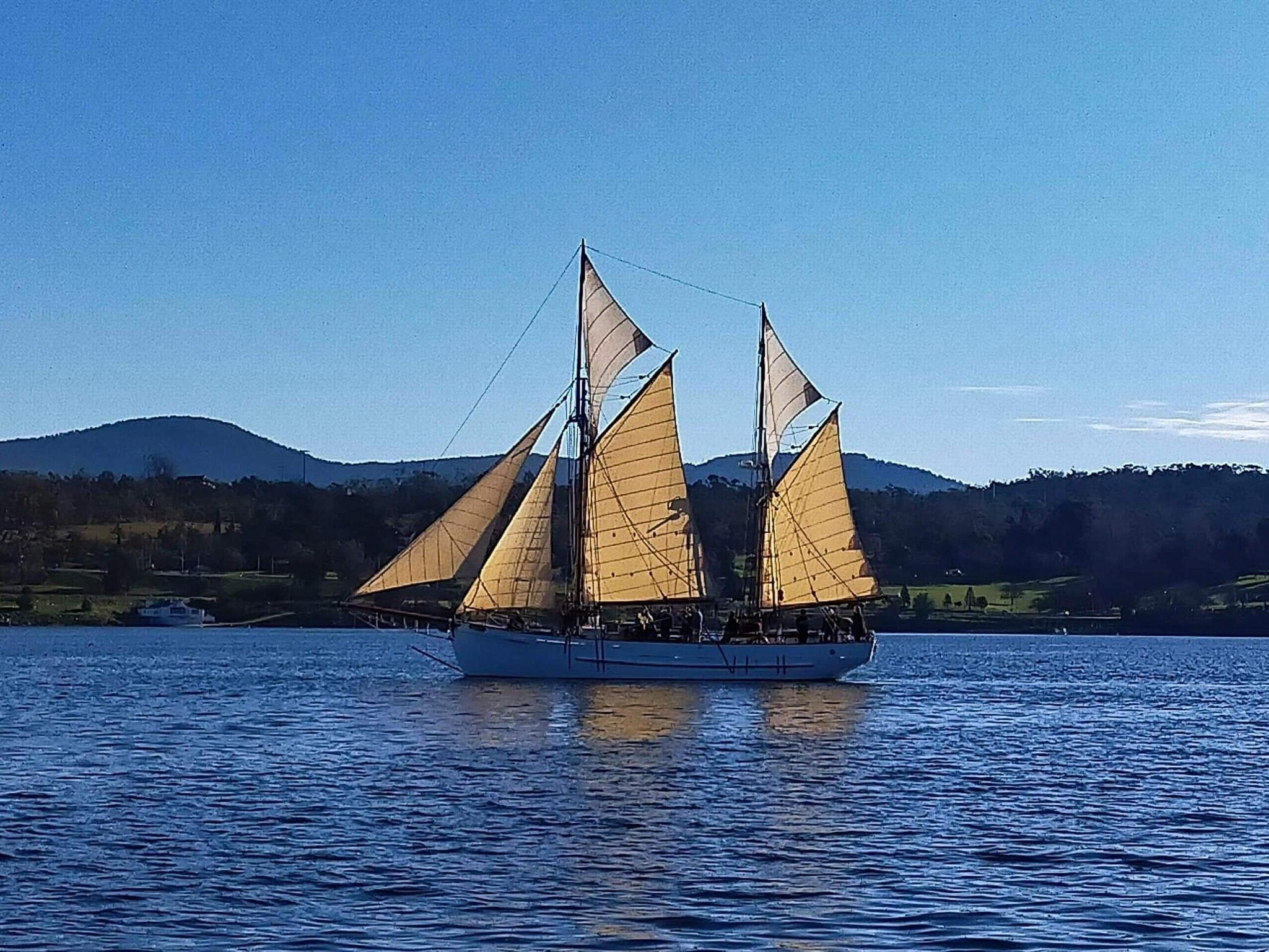
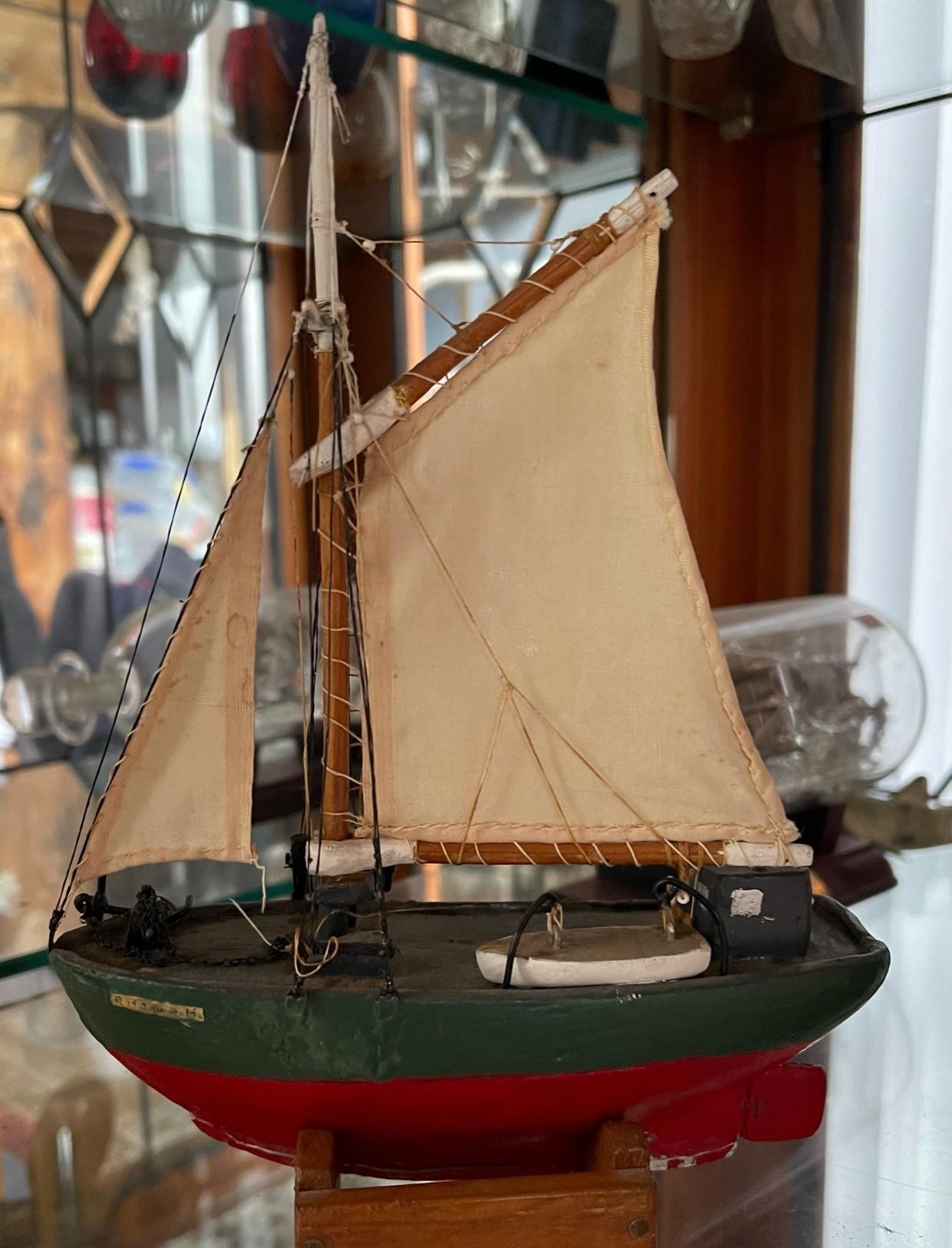
You may wonder why this is all significant in the realm of Women Who Sail Australia…
When we purchased her, our aim was to ensure we preser ved a piece of Tasmanian
maritime history in Tasmania. There are so many stories, each create their own chapter in history: the boat that had the first electronic fish finder in Tasmania (rudimentary as it was); one of the last (if not the last) boats built by shipwright Ned Jack with his son Edwin; and the boat that Max Hardy used when he discovered crays on the NW Continental Shelf.
Our way is a little different.
The Rhona H is now operated by Heritage Sailing Tasmania with an all-volunteer crew. You will see her on the River Derwent on most weekends with her sails set and, over summer, she has extended options including Bruny Island and twilight sails.
Sailing with us allows the ship to continue its operations with a mission of embracing traditional sailing and nautical skills whilst showcasing an historic Tasmanian vessel and waterways. More than just a sailboat ride, it’s an authentic sailing experience and an amazing way to see Hobart and surrounds as well as contribute to keeping Hobart’s oldest and smallest tall ship afloat.

Sailing with the all-volunteer crew gives the experience of how the trading ketches of old sailed and plied Tasmanian waters. Even though she was built as a fishing boat, the rig allows us to emulate the ketches of old.
We ALWAYS set the sails and all ages are welcome. Kids (of all ages) love to take the helm, steer the ship, haul on lines, and ring the bell and we promote all measures to enhance and support the protection of our environment. Health promotion is inherent in all our activities and we celebrate Mental Health Week each October.
We welcome new crew and offer opportunities to learn in a non-threatening environment.
WWSA members Kaz Clarke, Julie Porter, and Alis Wood aboard Rhona H.
Women Who Sail Australia recently had three members on board together, which was great as we farewelled the SV Derwent Hunter as she departed Hobart for her trip back to warmer climes following her winter sojourn in Tasmania.
It’s something a bit special having such collegiately onboard and we love to welcome fellow WWSA sailors!
Fair winds and maybe another instalment another time!
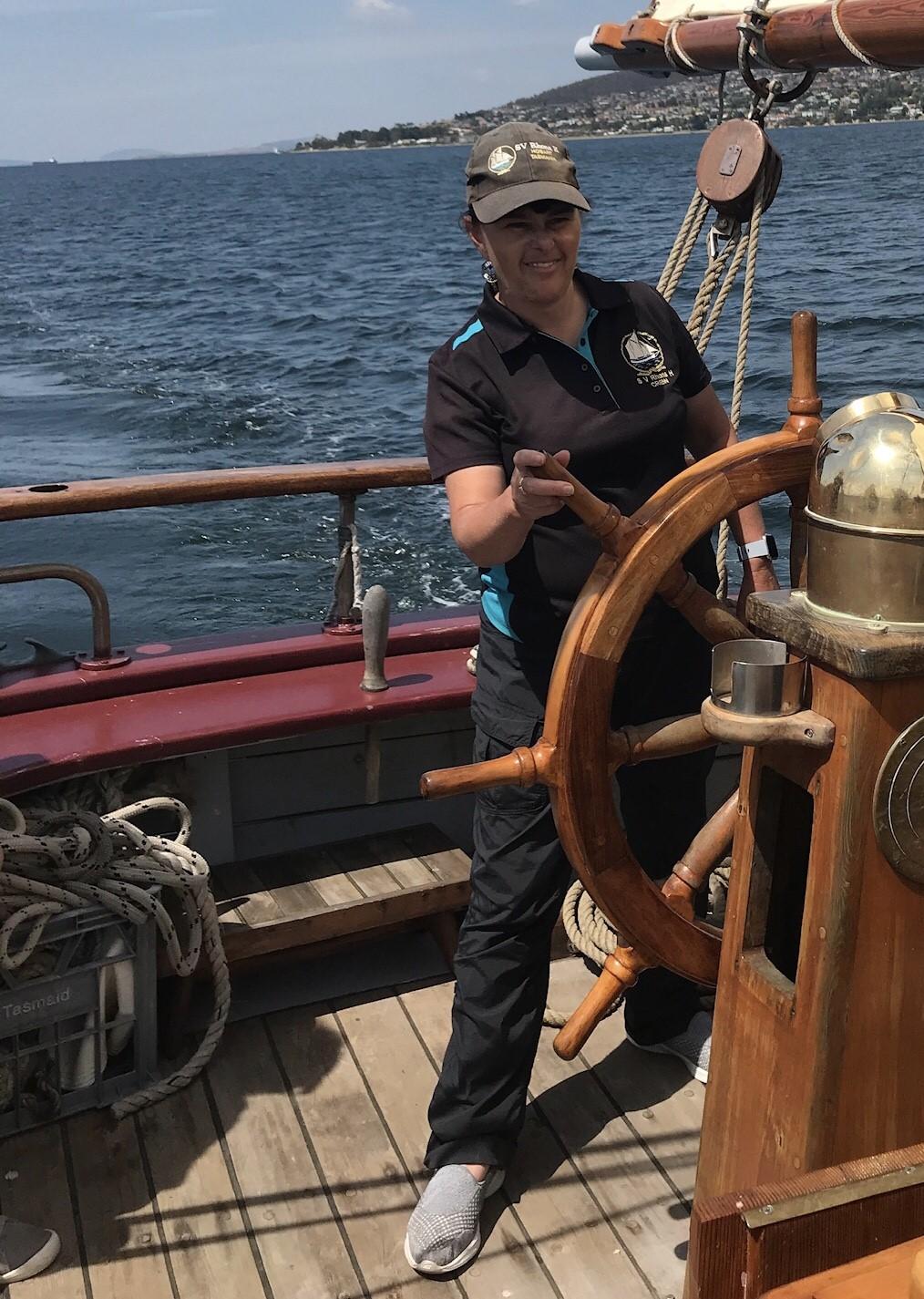
www.rhonah.com.au

Tall Ships James Craig and HMS Bark Endeavour in Tasmania.
